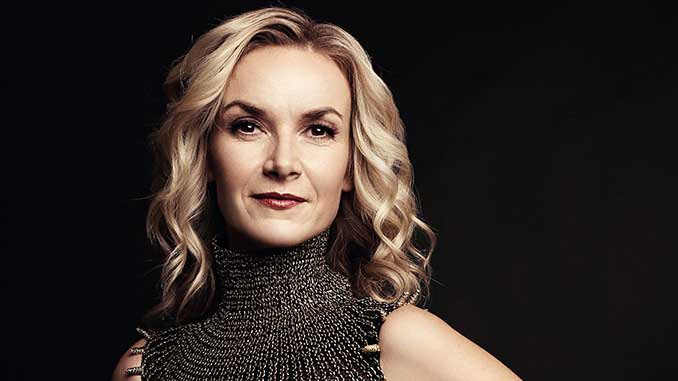 As a work that appears to hold a mirror up to the art of opera itself, Richard Strauss’ Capriccio provides much to reflect on – something of a cerebral but entertaining romp Strauss called ‘A Conversation Piece for Music’.
As a work that appears to hold a mirror up to the art of opera itself, Richard Strauss’ Capriccio provides much to reflect on – something of a cerebral but entertaining romp Strauss called ‘A Conversation Piece for Music’.
The work’s fundamental construct is a debate over which is more superior, the words or the music, as the composer Flamand and the poet Olivier go head to head in order to woo the heart of a young widow, the Countess Madeleine, in late 18th century France at her birthday celebrations.
Against the background of uncertainty when it premiered in Germany in 1942 as the Second World War was ravaging Europe, Capriccio must have provided respite from the climate of anxiety, be it for the privileged few.
Nevertheless, far from seeming frivolous, Strauss and his librettist Clemens Krauss understood the power of theatre and, besides, the battle they created on the stage brought the relevance and oddities of the art form to the fore as a paradoxical critique marking Strauss’ final opera.
Over 40 years passed before Capriccio premiered on our shores in a well-received production by State Opera South Australia in 1985. But not since director John Fox’s Roaring Twenties production for Opera Australia, as part of the Sydney Olympic Arts Festival in 2000, and its revival in 2011, has it been fully staged.
On Thursday evening at Melbourne’s grand Palais Theatre, minus the trimmings of sets and costumes, however, at least Capriccio‘s battle of words and music made it to the stage in a one-performance-only concert treat. For it, Victorian Opera (VO), in collaboration with Australian National Academy of Music (ANAM), decorated it with splendid class and talent under the judicious command of celebrated conductor Simone Young.
VO and ANAM have proven themselves to be exceptional collaborators over the years and the results were indeed impressive under Young’s natural and instinctive style. Strauss’ molten and perfectly descriptive writing, often demonstrating subtle filmic qualities, received a thoughtful and evocative interpretation.
From the mood-setting and melodic Sextet for Strings that opens the work – during which Young took a casual seat alongside her players with what felt like a great deal of pride – and along its meandering path to its cacophonous peak and final dainty conclusion, Young never lost sight of establishing superlative equilibrium between music and voice. And the stage-filling ANAM players responded nimbly on every account, excellently meeting the demands of Strauss’ one act work at almost two hours and a half hours without interval.
Despite a rather frivolous love triangle is at its core, the work’s long list of characters add both clever and witty argument to proceedings. The air-slicing precision, crystal clarity and dynamism of Lithuanian soprano Vida Mikneviciute added endless radiance to The Countess, her final monologue an affecting and poignant bloom that dignifies the debate without resolution. How could either words or music be victorious at the expense of the other?
Canadian Michael Schade issued a strong case as the composer Flamand, his exhilarating high head notes a solid capping to an appealing tenor and well-acted performance. As his rival, the poet Olivier, local baritone Stephen Marsh’s calm presence and professional maturity was matched with his assured hearth-warmed baritone.
Flair and persuasion abounded in Simon Meadows’ obvious joy in depicting hyperactive theatre director La Roche – furthering debate with declarations that both music and words are servants of the theatre – his imposing muscular baritone and brilliantly animated style reaching deep into La Roche’s great aria.
Robust baritone Samuel Dundas gave an understated but clever portrayal of the Countess’ brother, an amateur actor who surprises everyone with the astonishing idea for an opera based on the situation they themselves are in, thereby abruptly shifting audience perspective and turning everything inside out. Or could that be outside in? And as his latest love interest, reliable, rich and velvety mezzo soprano Deborah Humble caught much attention as elegant tragedienne Clairon.
Teddy Tahu Rhodes made a late but impactful appearance as The Major Domo as did Michael Petruccelli as the theatre prompter, Monsieur Taupe.
Strauss’ work gets off to a slow-paced start but builds as surprising layers and salient ideas are introduced as it mildly mocks, especially evident when the Italian singers arrive and tenor Carlos E. Bárcenas Ramírez and soprano Kathryn Radcliffe wonderfully mash Italian operatic custom.
Even an octet of male servants discuss the wild thought that their lot could feature in an opera, performed with kinetic comical aplomb and sound voice by developing local artists.
But, in all its subtle irony, Capriccio entertainingly explores and lauds the artistic mesh that opera is. Although, I daresay, if La Roche really got the final say, perhaps a couple of minor contractions would have served the debate better. And a performance without all the trimmings? Outraged, no doubt.
It made me wonder, if Capriccio is ever to get a fully staged local production in my lifetime, or Australian maverick director Barrie Kosky for that matter, I know who I would love to be invited for the job.
Capriccio
Palais Theatre, Lower Esplanade, St Kilda
Performance: Thursday 31 August 2023
Information: www.victorianopera.com.au
Image: Vida Mikneviciute – photo by Migle Golubickaite
Review: Paul Selar
